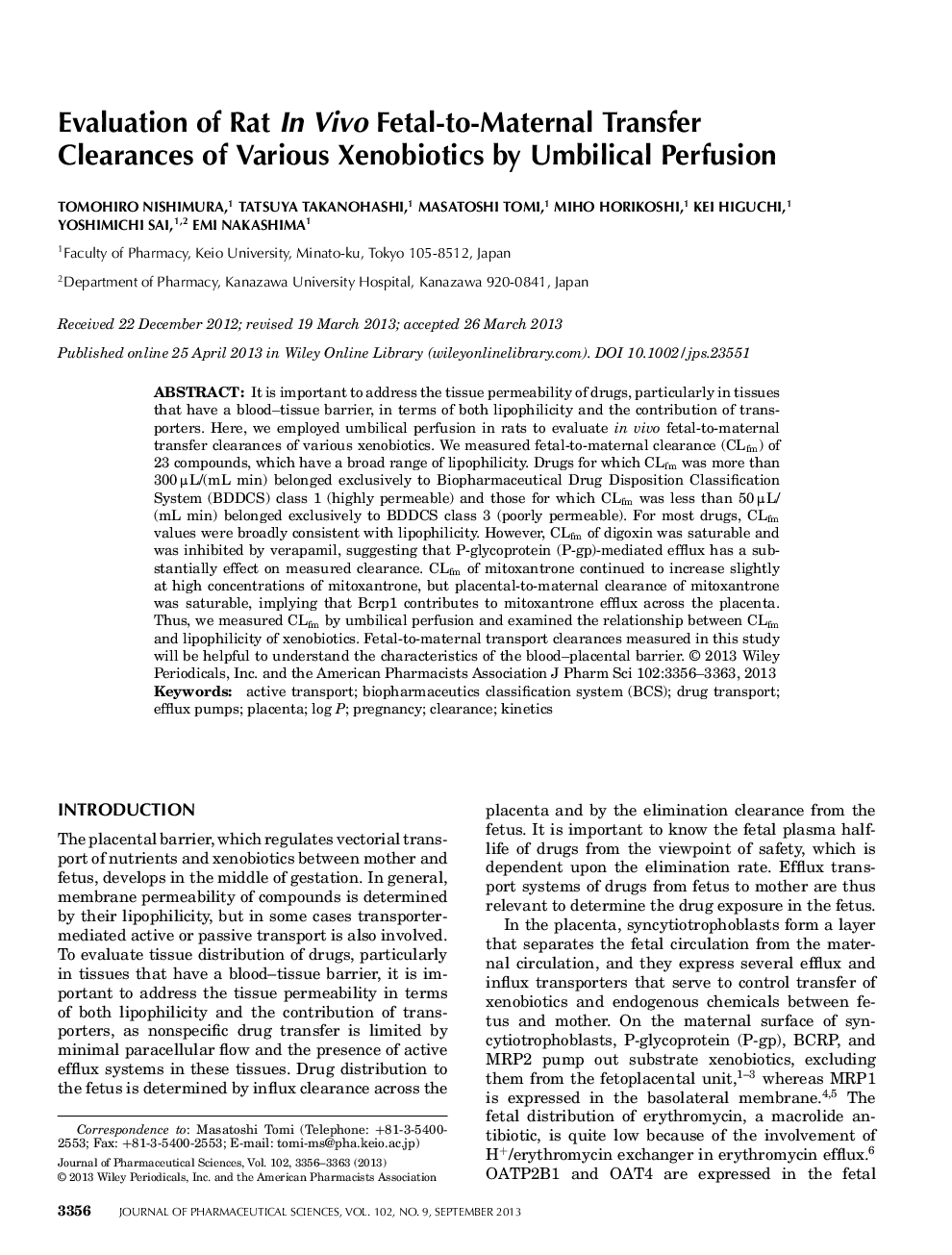| Article ID | Journal | Published Year | Pages | File Type |
|---|---|---|---|---|
| 2484848 | Journal of Pharmaceutical Sciences | 2013 | 8 Pages |
ABSTRACTIt is important to address the tissue permeability of drugs, particularly in tissues that have a blood–tissue barrier, in terms of both lipophilicity and the contribution of transporters. Here, we employed umbilical perfusion in rats to evaluate in vivo fetal-to-maternal transfer clearances of various xenobiotics. We measured fetal-to-maternal clearance (CLfm) of 23 compounds, which have a broad range of lipophilicity. Drugs for which CLfm was more than 300 µL/(mL min) belonged exclusively to Biopharmaceutical Drug Disposition Classification System (BDDCS) class 1 (highly permeable) and those for which CLfm was less than 50 µL/(mL min) belonged exclusively to BDDCS class 3 (poorly permeable). For most drugs, CLfm values were broadly consistent with lipophilicity. However, CLfm of digoxin was saturable and was inhibited by verapamil, suggesting that P-glycoprotein (P-gp)-mediated efflux has a substantially effect on measured clearance. CLfm of mitoxantrone continued to increase slightly at high concentrations of mitoxantrone, but placental-to-maternal clearance of mitoxantrone was saturable, implying that Bcrp1 contributes to mitoxantrone efflux across the placenta. Thus, we measured CLfm by umbilical perfusion and examined the relationship between CLfm and lipophilicity of xenobiotics. Fetal-to-maternal transport clearances measured in this study will be helpful to understand the characteristics of the blood–placental barrier.
